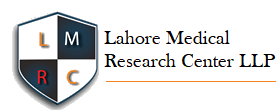Enhancing Neonatal Sucking Reflex: A Study on the Efficacy of Magnesium Sulphate in Severe Birth Asphyxia
Neonatal Sucking Reflex: Magnesium Sulphate in Severe Birth Asphyxia
DOI:
https://doi.org/10.54393/pjhs.v6i1.1936Keywords:
Birth Asphyxia, Neonatal Sucking Reflex, Magnesium Sulphate, Sucking ReflexAbstract
One of the main causes of prenatal deaths and a known factor in neuromotor disabilities is perinatal asphyxia. Objectives: To compare the efficacy of magnesium sulphate on the appearance of a good sucking reflex in cases of birth asphyxia with controls (without magnesium sulphate). Methods: This randomized controlled trial was conducted at the Department of Neonatology, The Children’s Hospital and the Institute of Child Health, Multan, from January 2024 to June 2024. A total of 80 full-term newborns of both genders with severe birth asphyxia admitted within six hours of life were randomly assigned to either the study group or the control group. The study group received 3 doses of magnesium sulphate 24 hours apart by intravenous infusion at 250 mg/kg/dose, and the control group did not receive this treatment. Supportive care was given to both study groups. Both groups were examined for sucking reflexes. Results: 46 (57.5%) were male, while 43 (53.8%) had a body weight of ≥2.5 kg. The mean age at the time of presentation was 3.2 ± 1.5 hours. Overall efficacy was observed in 48 (60.0%) babies. The distribution of efficacy in terms of the appearance of a good sucking reflex was significantly better in the magnesium sulphate group versus the control group (75.0% vs 45.0%, p=0.0062). Conclusions: It was concluded that magnesium sulfate was found to significantly improve the appearance of a good sucking reflex among newborns with severe birth asphyxia, highlighting its potential as a neuroprotective intervention in neonatal care.
References
Katabami K, Kimura T, Hirata T, Tamakoshi A. Association Between Advanced Airway Management with Adrenaline Injection and Prognosis in Adult Patients with Asystole Asphyxia Out-of-Hospital Cardiac Arrest. Journal of Epidemiology. 2024 Jan; 34(1): 31-7. doi: 10.2188/jea.JE20220240. DOI: https://doi.org/10.2188/jea.JE20220240
Nguyen D, Kritek PA, Greco SA, Prutkin JM. Bradycardia at the Onset of Pulseless Electrical Activity Arrests in Hospitalized Patients Is Associated with Improved Survival to Discharge. Heliyon. 2020 Feb; 6(2). doi: 10.1016/j.heliyon.2020.e03491. DOI: https://doi.org/10.1016/j.heliyon.2020.e03491
Zhang X, Peng K, Zhang X. The function of the NMDA Receptor in Hypoxic-Ischemic Encephalopathy. Frontiers in Neuroscience. 2020 Oct; 14: 567665. doi: 10.3389/fnins.2020.567665. DOI: https://doi.org/10.3389/fnins.2020.567665
Vongthip W, Nilkhet S, Boonruang K, Sukprasansap M, Tencomnao T, Baek SJ. Neuroprotective Mechanisms of Luteolin in Glutamate-Induced Oxidative Stress and Autophagy-Mediated Neuronal Cell Death. Scientific Reports. 2024 Apr; 14(1): 7707. doi: 10.1038/s41598-024-57824-2. DOI: https://doi.org/10.1038/s41598-024-57824-2
Xie D, Song C, Qin T, Zhai Z, Cai J, Dai J et al. Moschus Ameliorates Glutamate-Induced Cellular Damage by Regulating Autophagy and Apoptosis Pathway. Scientific Reports. 2023 Oct; 13(1): 18586. doi: 10.1038/s41598-023-45878-7. DOI: https://doi.org/10.1038/s41598-023-45878-7
Nguyen L and Wang C. Anti-NMDA Receptor Autoimmune Encephalitis: Diagnosis and Management Strategies. International Journal of General Medicine. 2023 Dec: 7-21. doi: 10.2147/IJGM.S397429. DOI: https://doi.org/10.2147/IJGM.S397429
Munteanu C, Rotariu M, Turnea M, Ionescu AM, Popescu C, Spinu A et al. Main Cations and Cellular Biology of Traumatic Spinal Cord Injury. Cells. 2022 Aug; 11(16): 2503. doi: 10.3390/cells11162503. DOI: https://doi.org/10.3390/cells11162503
Hou H, Wang L, Fu T, Papasergi M, Yule DI, Xia H. Magnesium Acts as A Second Messenger in the Regulation of NMDA Receptor-Mediated CREB Signaling in Neurons. Molecular Neurobiology. 2020 Jun; 57: 2539-50. doi: 10.1007/s12035-020-01871-z. DOI: https://doi.org/10.1007/s12035-020-01871-z
Oorschot DE, Sizemore RJ, Amer AR. Treatment of Neonatal Hypoxic-Ischemic Encephalopathy with Erythropoietin Alone and Erythropoietin Combined with Hypothermia: History, Current Status, and Future Research. International Journal of Molecular Sciences. 2020 Feb; 21(4): 1487. doi: 10.3390/ijms21041487. DOI: https://doi.org/10.3390/ijms21041487
Notarbartolo V, Badiane BA, Angileri VM, Piro E, Giuffrè M. Antioxidant Therapy in Neonatal Hypoxic Ischemic Encephalopathy: Adjuvant or Future Alternative to Therapeutic Hypothermia? Metabolites. 2024 Nov; 14(11): 630. doi: 10.3390/metabo14110630. DOI: https://doi.org/10.3390/metabo14110630
Lingam I and Robertson NJ. Magnesium as a Neuroprotective Agent: A Review of Its Use in the Fetus, Term Infant with Neonatal Encephalopathy, and the Adult Stroke Patient. Developmental Neuroscience. 2018 Feb; 40(1): 1-2. doi: 10.1159/000484891. DOI: https://doi.org/10.1159/000484891
Kumar PK, BilasRanjan R, Nag S. A Randomized Controlled Trial On the Efficacy of Intravenous Magnesium Therapy in Perinatal Asphyxia in A Resource-Poor Setting. Journal of Dentistry and Medical Sciences. 2015; 14(3): 5-9.
Mazhar A, Rehman A, Sheikh MA, Naeem MM, Qaisar I, Mazhar M. Neonates—A Neglected Pediatric Age Group. Journal of the Pakistan Medical Association. 2011; 61(625): 22204232.
Khatri N, Sumadhura B, Kumar S, Kaundal RK, Sharma S, Datusalia AK. The Complexity of Secondary Cascade Consequent to Traumatic Brain Injury: Pathobiology and Potential Treatments. Current Neuropharmacology. 2021 Nov; 19(11): 1984-2011. doi: 10.2174/1570159X19666210215123914. DOI: https://doi.org/10.2174/1570159X19666210215123914
Aslam HM, Saleem S, Afzal R, Iqbal U, Saleem SM, Shaikh MW et al. Risk Factors of Birth Asphyxia. Italian Journal of Pediatrics. 2014 Dec; 40: 1-9.doi: 10.1186/s13052-014-0094-2. DOI: https://doi.org/10.1186/s13052-014-0094-2
Mamo SA, Teshome GS, Tesfaye T, Goshu AT. Perinatal Asphyxia and Associated Factors Among Neonates Admitted to A Specialized Public Hospital in South Central Ethiopia: A Retrospective Cross-Sectional Study. PloS One. 2022 Jan; 17(1): e0262619. doi: 10.1371/journal.pone.0262619. DOI: https://doi.org/10.1371/journal.pone.0262619
Bhat MA, Charoo BA, Bhat JI, Ahmad SM, Ali SW, Mufti MU. Magnesium Sulfate in Severe Perinatal Asphyxia: A Randomized, Placebo-Controlled Trial. Pediatrics. 2009 May; 123(5): e764-9. doi: 10.1542/peds.2007-3642. DOI: https://doi.org/10.1542/peds.2007-3642
Sajid NK, Junaid M, Ahmed S. Therapeutic Efficacy of Magnesium Sulphate On Neurological Outcome of Neonates with Severe Birth Asphyxia. Journal of University Medical & Dental College. 2018 Dec; 9(4): 1-5.
Siddiqui MA and Butt TK. Role of Intravenous Magnesium Sulphate in Term Neonates with Hypoxic Ischemic Encephalopathy (Hie) in A Low-Income Country: A Randomized Clinical Trial. Resuscitation. 2021 Sep; 2(5): 0-47. doi: 10.29271/jcpsp.2021.07.817. DOI: https://doi.org/10.29271/jcpsp.2021.07.817
Nanda AK, Jalan A, Pradhan SK, Kumar TR, Pradhan PC. Effect of Magnesium Sulphate Infusion On Neonatal Outcomes in Babies with Perinatal Asphyxia: A Randomized Controlled Trial. International Journal of Health Sciences. 2022(II): 13064-75. doi: 10.53730/ijhs.v6nS2.8450. DOI: https://doi.org/10.53730/ijhs.v6nS2.8450
Ichiba H, Tamai H, Negishi H, Ueda T, Kim TJ, Sumida Y et al. Randomized Controlled Trial of Magnesium Sulfate Infusion for Severe Birth Asphyxia. Pediatrics International. 2002 Oct; 44(5): 505-9. doi: 10.1046/j.1442-200X.2002.01610.x. DOI: https://doi.org/10.1046/j.1442-200X.2002.01610.x
Mahmood T, Zulfiqar R, Farah T, Saeed T. Effect of Postnatal Magnesium Sulfate Infusion On Neurological Outcome of Term Neonates with Severe Perinatal Asphyxia. Journal of Rawalpindi Medical College. 2015 Dec; 19(3).
Manet S, Gressens P, Gadisseux JF, Evrard P. Prevention by Magnesium of Exototoxic Neuronal Death in the Developing Brain: An Animal Model for Clinical Intervention Studies. Developmental Medicine and Child Neurology. 1995 Jun; 37(6): 473-84. doi: 10.1111/j.1469-8749.1995.tb12035.x. DOI: https://doi.org/10.1111/j.1469-8749.1995.tb12035.x
Shankaran S, Laptook AR, Ehrenkranz RA, Tyson JE, McDonald SA, Donovan EF et al. Whole-Body Hypothermia for Neonates with Hypoxic-Ischemic Encephalopathy. New England Journal of Medicine. 2005 Oct; 353(15): 1574-84. doi: 10.1056/NEJMcps050929. DOI: https://doi.org/10.1056/NEJMcps050929
Sreenivasa B, Lokeshwari K, Joseph N. Role of Magnesium Sulphate in Management and Prevention of Short Term Complications of Birth Asphyxia. Sri Lanka Journal of Child Health. 2017 Jun; 46(2). doi: 10.4038/sljch.v46i2.8271. DOI: https://doi.org/10.4038/sljch.v46i2.8271
Shepherd ES, Goldsmith S, Doyle LW, Middleton P, Marret S, Rouse DJ et al. Magnesium Sulphate for Wome#n at Risk of Preterm Birth for Neuroprotection of the Fetus. Cochrane Database of Systematic Reviews. 2024 May. doi: 10.1097/AOG.0000000000005644. DOI: https://doi.org/10.1002/14651858.CD004661.pub4
Galinsky R, Bennet L, Gunn AJ. Does MgSO4 Protect the Preterm Brain? Dissecting Its Role in the Pathophysiology of Hypoxic Ischemic Encephalopathy. Neural Regeneration Research. 2024 Sep: 10-4103. doi: 10.4103/1673-5374.390977. DOI: https://doi.org/10.4103/1673-5374.390977
Atia RR, Ayed MM, Aljadani SH. Effects of Whole Body Cooling and Magnesium Sulfate On Infants with Hypoxic-Ischemic Encephalopathy Treatment. Ain Shams Medical Journal. 2023 Jun; 74(2): 547-56. doi: 10.21608/asmj.2023.307140. DOI: https://doi.org/10.21608/asmj.2023.307140
Downloads
Published
How to Cite
Issue
Section
License
Copyright (c) 2025 Pakistan Journal of Health Sciences

This work is licensed under a Creative Commons Attribution 4.0 International License.
This is an open-access journal and all the published articles / items are distributed under the terms of the Creative Commons Attribution License, which permits unrestricted use, distribution, and reproduction in any medium, provided the original author and source are credited. For comments













